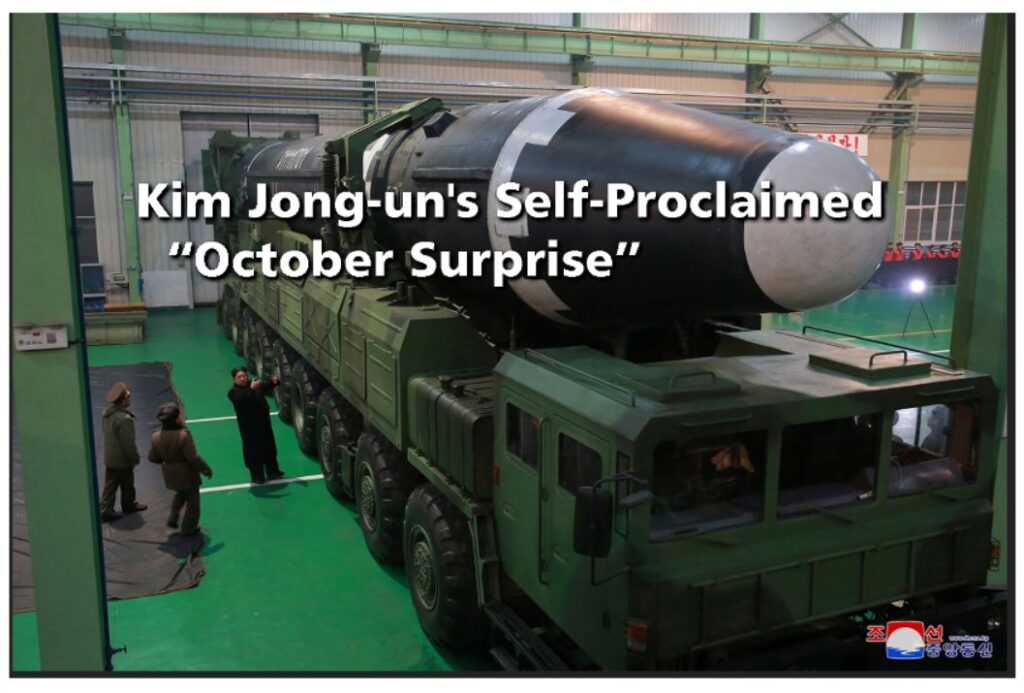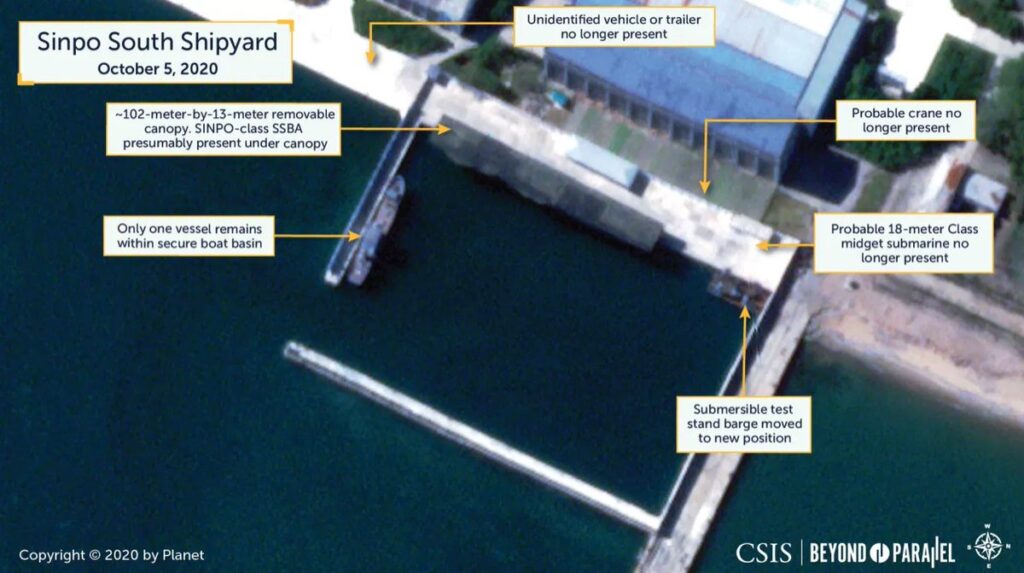
The 75th anniversary of the Korean Workers’ Party, on October 10,
Expect North Korea to display new strategic weaponry for the 75th anniversary of its ruling party on October 10
Attention is focused on the development of submarine-launched ballistic missiles, but mobile land-based ballistic missiles are already a credible, advancing threat
The most important type of truly “new strategic weapon” for North Korea would likely be a large road-mobile ballistic missile with the ability to deliver multiple re-entry vehicles (RVs). (Re-entry vehicles are carried at the top of a ballistic missile, detaching after the missile ascends to carry and protect a warhead as it travels to its target from space through atmospheric re-entry.) This scenario has received far less attention than a ballistic-missile submarine, even though a member of the Intelligence Committee of South Korea’s legislature has commented on the possibility and experts have long noted multiple RVs as a logical future step for North Korea’s weapons development.
A ballistic missile with multiple RVs would pose at least three major problems for the US-South Korea alliance that a ballistic-missile submarine would not.
North Korea could quickly expand the number of warheads it could deliver even if it is only able to produce a few missiles at a time, a key consideration if sanctions have been effective in limiting North Korea’s access to the materials necessary to build missiles.
Multiple RVs could boost the credibility of North Korea’s deterrent by overcoming skepticism about the accuracy and reliability of North Korea’s RVs, since they would give each missile multiple chances for a successful hit.
Perhaps most importantly, North Korea’s fielding of an ICBM with multiple warheads would make it much more complicated, and possibly impractical, for the US military to intercept a North Korean missile attack on the continental United States. During the Cold War, the advent of multiple warhead ICBMs caused many experts to conclude that interceptor missiles could not be a practical or cost-effective defense for the continental United States. This is what eventually led to the Reagan administration’s focus on new counter-missile technologies like space-based lasers under the Strategic Defense Initiative, colloquially known as “Star Wars.”
“New strategic weapon” being a ballistic-missile submarine ? (a submarine fitted with vertical launch tubes for ballistic missiles). Though journalists and experts have repeatedly pointed to indications of work on a ballistic-missile submarine and submarine-launched ballistic missiles (SLBMs),
Activity at North Korea’s Sinpo submarine yard is visible in open-source imagery in a way that many activities in the “hard target” of North Korea are not, so it is reported on more vividly and frequently. A September 4 article from the Center for Strategic and International Studies’ “Beyond Parallel” site, for example, identified activities at Sinpo potentially associated with preparations for an SLBM test, quickly triggering a sharp and very public debate over the significance of these developments.
North Korea already tested a new model of submarine-launched ballistic missile last October, and gave us glimpses of what a number of analysts believe is a submarine being converted to fire ballistic missiles. So even if this is the strategic weapon Kim was referring to, it is not really that “new.” The SLBM program has been slowly making progress for years. As the US Department of Defense reported, North Korea first fired a ballistic missile from a submerged submarine as far back as August 2016.





